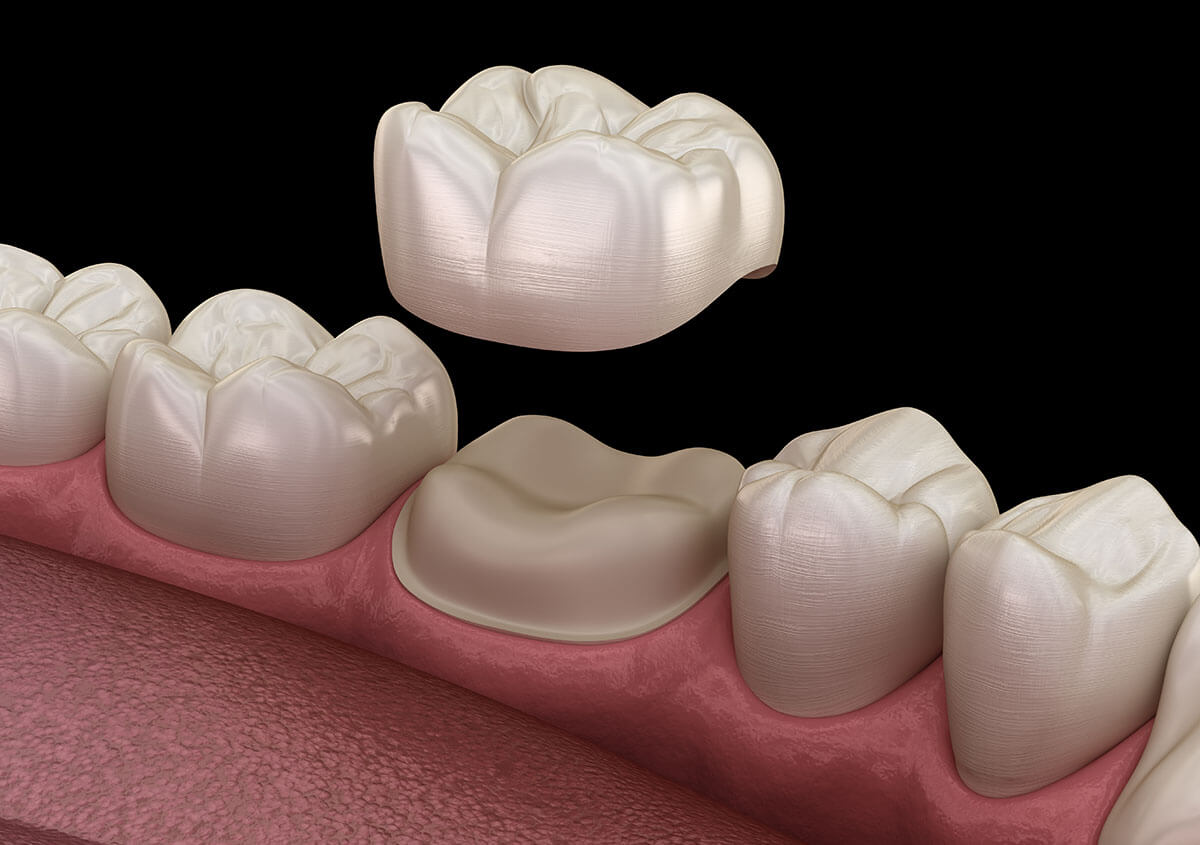
28
Sep
Avoid Extraction and Save Your Tooth with Dental Crown Treatment

One of the worst fears we have involves losing a tooth. Our teeth are not just important tools we use for eating and speaking; they also represent a vital part of our personality through our smiles. For those with missing teeth, smiling can be very difficult. Even sharing a laugh with friends and family can be challenging while trying to hide their smiles. Unfortunately, when a tooth is damaged either through sudden trauma or tooth decay, there is a very real chance you could lose it forever.
Thankfully, at Highland Dental Clinic, Dr. Blanca Fernandez and her team may be able to save your smile with techniques such as using a dental crown for your tooth.
What Are Dental Crowns?
Dental crowns, sometimes referred to as “tooth caps” or “porcelain crowns,” are a type of dental prosthesis used to restore the whole look and function of a damaged tooth. Dental crowns can also protect a natural tooth from further damage and are often used on patients after root canal treatment or to complete dental implants.
Crowns can also be used to fully restore missing teeth as part of partial dentures or dental bridges. They can also be used to cover up a misshaped or stained tooth. This versatile therapy is one of the most common treatments used to both save and restore teeth.
The Dental Crown Procedure
The procedure for placing a dental crown is fairly straightforward. The first step often involves getting dental impressions using either physical molds of your smile or through advanced digital scanning technology.
Next, Dr. Fernandez will want to ensure the new crown will match the shade of your natural teeth. Before this treatment, many patients elect to undergo our professional teeth whitening treatment to ensure the new crown will match a more attractive smile.
We will then prepare the tooth by using techniques such as applying filling and removing older decayed tissue.
Request an Appointment
Dr. Fernandez will then shape your tooth to ensure that your new crown will be a precise fit.
The overall time frame for this procedure can take 1 hour over the course of one or two visits, depending on the type of crown you get. The more traditional crowns may take a couple weeks to create between your first and final visit.
After placing your new crown, you’ll want to avoid chewing on hard or sticky foods as they can damage your crown. Recovery after the procedure is usually just a couple of days, and some patients may experience mild after effects such as sensitivity, inflammation, and irritation. However, such symptoms typically resolve on their own after about one or two weeks. Most anti-inflammatory medicines, such as ibuprofen, can help ease discomfort.
Don’t Lose Your Smile
Saving your smile starts with the proper treatment. To learn more about dental crowns and determine if this is the best treatment for your situation, please call Highland Dental Clinic at (863) 457-1954. Our office is located at 5163 US HWY 98 South, Lakeland, FL.
Share this Article

Dr. Blanca Fernandez is a skilled dentist in Lakeland, FL. She studied general dentistry at the Colombian Dental College and studied prosthodontics and received a Master of Science at the Dentistry Foundation of San Martin in Bogota, Colombia. She earned her Doctorate in Dental Medicine at Nova Southeastern University in Ft. Lauderdale, Florida. With specialized training in cosmetic dentistry, dental implants, and oral surgery, Dr. Fernandez is a Fellow of the International Congress of Oral Implantologists and member of the American Academy of General Dentistry, American Dental Association, Florida Dental Association, West Coast Dental Association, and Polk County Dental Association.
